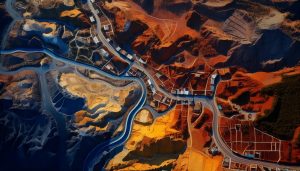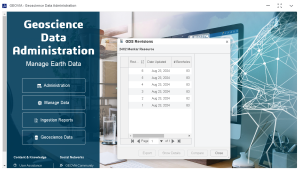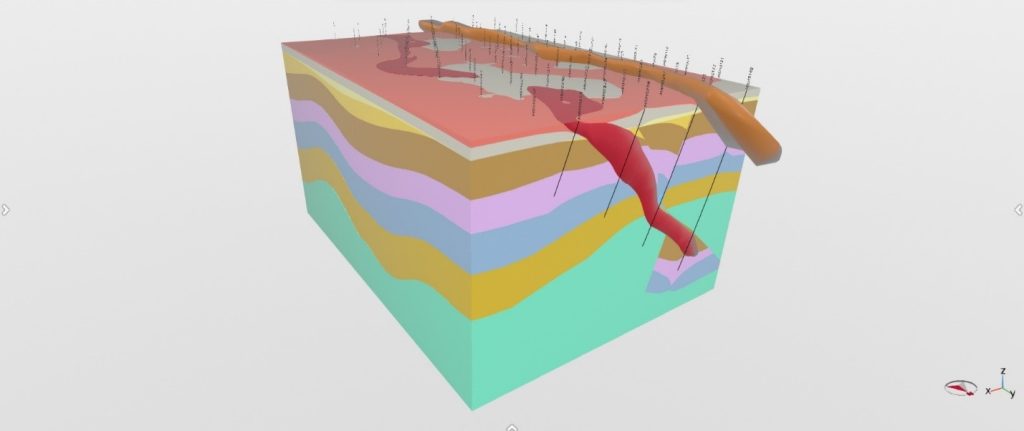Creating a geology model can be an exciting and educational experience, whether for academic purposes or personal interest.
Implicit geological modeling is here to stay. But it’s not the only thing geologists need.
Collecting comprehensive sampling and geoscience data from the field is the first step in an exploration or mining company’s quest. They aim to define the location, shape, and grade of an orebody.
After that, the operation must transform their geoscience information into reliable geological models of the subsurface. Traditional explicit modeling methods do a great job of this. They provide geologists with the tools to visualize and build their unique interpretation of the deposits’ geology down to the smallest detail.
Over recent years, implicit geological modeling methods and solutions have spread through the industry. They have proved they are here to stay, largely due to ease of use, speed, and intelligence.
Whether implicit modeling techniques generate better results than explicit methods remains a topic of discussion. Ultimately, both modeling methods are tools. Like any tool, in the wrong hands, they can be misused. The ability of a geologist to make a model that accurately reflects and represents in-ground conditions is still determined by the skill, knowledge, and due diligence of the individual geologist. This is combined with adequate field observations and data support, as it should be.

An overview: benefits of implicit modeling
For several years now, geology model modeling has been gaining ground. It has gained ground on the highly trusted and widely used explicit geological modeling methods. There are good reasons for that. The below list outlines some of the clear benefits from implicit modeling. In the example below, the comparison is made between GEOVIA’s Surpac (explicit) and Geology Modeler (implicit) solutions.
- Speed – generate complex geological models in minutes.
- Automation – build models in an automated way, saving time and making the process auditable and repeatable.
- Accessibility – geology model generation is not dependent on a single individual user, anyone within a team can update a setting, or add new data, and update the model.
- Traceability – geology model revisions capture and retain modifications over time. This provides geologists with the capability to capture settings, input data, and decisions made for each model generated, which in turn allows for excellent traceability and auditability. This provides geologists with confidence the geology model has been generated using the right data.
- Integration – Modern implicit modelling tools can integrate with other platforms used across the business, which improves data security, management, and accessibility within other business processes (such as revision and lifecycle management, task management, issue management, risk management, or project management). In this example, GEOVIA Surpac and the Geology Modeler integrate with Dassault’s 3DEXPERIENCE platform.
Geology models are accurate and reliable. But they are often created using repetitive manual processes. As such, they can be difficult to update when new data is supplied. This makes them time-consuming and difficult to work with when responding to changing business objectives or operational demands. It can take hours and sometimes days for a geologist to digitize all their wireframes. They then create the meshes, ensure those meshes are valid, and use them in block modeling processes.
An implicit geological modeler helps geologists automate that process. This makes the process much faster, as well as fully traceable and repeatable. By reducing the amount of manual work geologists are now doing, an implicit solution gives them more time to spend in the field. They can interpret the geology or review their data to better understand the genesis and evolution of a deposit.
The benefits of implicit modelling in more detail – Radial Basis Function (RBF)
Implicit modeling is a process where a continuous mathematical representation of an attribute is determined across a volume. This approach requires minimal interaction from the geologist. The computational calculations drastically reduce the time it takes to perform the modeling. This approach means model generation can typically be completed in seconds or minutes. This is an improvement across orders of magnitude when compared to explicit modeling methods applied to identical data.
The Radial Basis Function algorithm (RBF) is well known throughout the mining industry today. It is known for its use and adoption in implicit modeling. It has quickly become the go-to algorithm for building geological models. This algorithm defines how each point in 3D space is interpolated based on the cloud of input data points. It is well-known that RBF is well suited for multivariate interpolation with scattered data. It allows us to fit all input source points and generate a smooth surface. Moreover, it works well with a non-uniform set of data points and provides good extrapolation results. There are many implicit geological modeling solutions available based on this approach. However, at GEOVIA, we have developed our own algorithms to improve RBF and make it even faster.
Data management
An accurate and representative geology model is only as good as the data that feeds into it. This reminds me of the phrase ‘rubbish in, rubbish out’, and it’s certainly no different with geology models. Diligent and robust data management and validation practices are essential. They ensure accurate, reliable, and representative geology models.
Geologists must manage the mass of geoscience data collected by geoscientists, engineers, consultants, and contractors. This includes drillhole records, geological and geophysical field observations. It also includes geochemical, lithological, and remote sensing data, assays, etc.
Many exploration and mining companies today work with explicit modeling software. This software often uses a file-based approach. In this approach, data and files are stored in folders locally on the user’s machine or file servers. This traditional data management tends to be slow and subject to human error. As a result, it often causes rework or delays.
A business enterprise platform, leveraging a unified data model, provides a secure central data repository. This can be either on-cloud or on-premises. Geologists can store geoscience and mining data in any format, structured or unstructured. From there, all geoscience data, along with other data, becomes part of a unified data model. This includes parametric mine designs, pit optimizations, infrastructure, simulations, land use, etc. In this model, one data source will always speak to another, and all data is interconnected and relational. Whenever new data arrives in the repository, it updates across the platform.

The best of both worlds – gaining greater control through harnessing the power of explicit and implicit modeling
Implicit modelling methods can also leverage data and benefit from pre-existing explicit geology models to give geologists a better representation of the sub-surface environment.
For example, the GEOVIA Geology Modeler can give control back to geologists in the following ways:
- Constraint lines – associate or digitise polylines to support the available borehole data and realise desired outcrop patterns or cross-sectional interpretations within an implicit geology model.
- Explicit intrusions/orebodies – associate explicit solids to gain explicit control over high-priority domains while still implicitly modeling surrounding geology and structures.
- Pinch-outs – globally control the taper of a pinch-outs.
- Structural measurements – utilise downhole structural measurements to better model faults or folded deposits.
- Dynamic isotropy and trend surfaces – quickly model the changeable geomorphology of orebodies and/or intrusions.
These features and more, make for a comprehensive implicit geology modeling approach. It makes it possible for geologists to revise and refine models. As a result, they generate the exact model they need within an automated and repeatable process. This allows geologists to spend time getting the geological interpretation right, giving them confidence in the resulting implicit model.
